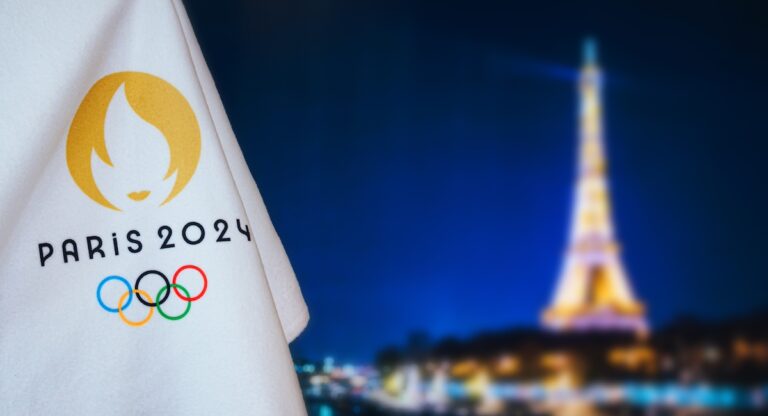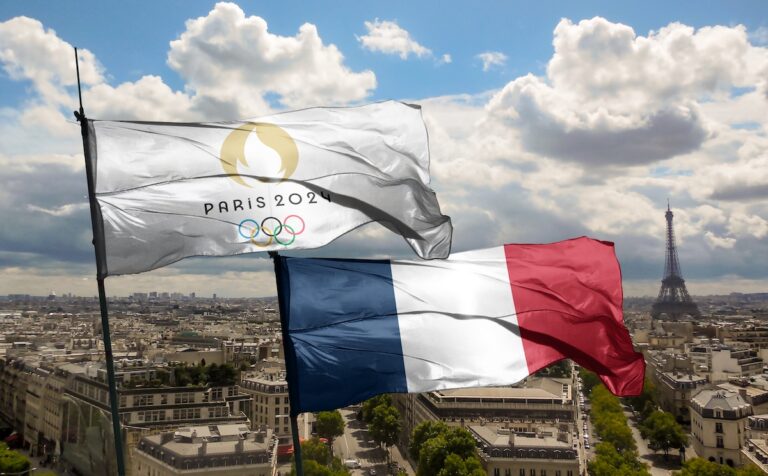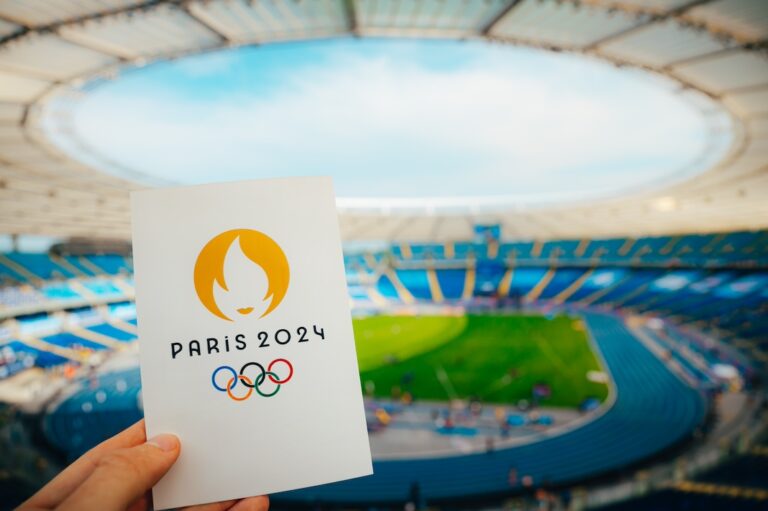If you’re planning a stay in Paris during the long-awaited 2024 Olympics, you — along with the other 10 million people expected to flock to the streets of the French capital between July 26 and August 11 — likely have a few questions.
Will the main attractions still be open? What about restaurants? Which neighborhoods are going to be off-limits to pedestrians? And wait, what about the Métro?
Whether you’re jetting to Paris for the Olympics or just have a trip planned that overlaps with the big games, we’ve got you covered – starting with public transportation.
Below, we’re outlining everything you need to know to navigate the city with ease.
Getting to and from the Airport
If you’re flying into or out of Charles de Gaulle, you have a few options.
- You can take the RER B (€11.80) to one of several stops in Paris: Gare du Nord, Châtelet-Les-Halles, Saint-Michel-Notre-Dame, Luxembourg, Palais-Royal, Denfert-Rochereau, or Cité Universitaire.
- The RoissyBus (€16.60) stops at Paris-Opéra at the corner of Rue Scribe and Rue Auber.
- There are also taxi stands around the baggage claim area in each terminal. A one-way taxi or Uber to or from Charles de Gaulle will run you €50-€60.
Traveling through Orly instead?
- RER B (€14.50) is also an option, and it’ll let you off at Denfert-Rochereau, Châtelet-Les-Halles, or Gare du Nord.
- The OrlyBus (€11.20) stops at Denfert-Rochereau.
- Taxi stands at Orly can be found at gates 14a, 32a, and 48a. A ride into the center of Paris will run you around €40.
A few logistical tips and reminders:
- If you purchase the Paris 2024 Day Pass (more on that below), it includes trips to both airports.
- If you’re hoping to fly into Paris for your final destination or a layover on July 26, know that the main airports (Charles de Gaulle, Orly, and Beauvais) will be closed in the evening for security reasons during the Opening Ceremony. There will also be a no-fly zone in effect from 7pm until midnight over an area spanning 150 kilometers. If you’re affected, your airline will notify you about scheduling/compensation.
Navigating Within the City by Métro
The good news: Valérie Pécresse, President of the Regional Council of Île-de-France (which includes Paris) recently announced that, for the first time in Olympics history, all sporting events will be accessible via public transportation.
The not-so-great news: it’ll cost you. The fare for a one-way Métro ride (T+) will temporarily jump from €2.10 to €4, while a 10-ticket pass on the Navigo Easy Booklet (ordinarily €16.90) will cost €32. These increases will cover the roughly €200 million that has been spent on expansion and repair work over the past year in an attempt to meet the anticipated demand.
Note that these changes will not affect the price of monthly or yearly passes.
Navigating Outside the Main Métro Zone
Since several Olympic events take place in the suburbs, there is an option to purchase the Paris 2024 pass. At €16 per day or €70 per week, it’ll get you unlimited rides in all five zones — plus trips to both Charles de Gaulle and Orly airports.
Without the pass, trips to and from Charles de Gaulle on the RER B plus two Métro rides per day for seven days will run you just shy of €80, so if you anticipate having to criss-cross the city often, the pass is an economical option.
Navigating the City by Foot
With the exception of the immediate vicinity of competition venues, pedestrians will be allowed everywhere that’s normally accessible by foot in Paris.
Navigating The City By Bicycle
Cyclists will also be free to traverse the city, with exceptions for event access areas designated on official Préfecture de Police maps by a thin blue line called the Périmètre de protection.
Under the direction of Paris mayor Anne Hidalgo, the city is encouraging transportation via bicycle by opening up another 30 miles of paths linking certain areas of Paris to sports venues in the northeastern suburb of Seine-Saint-Denis. The new paths, dubbed “Olympilanes,” are an addition to the roughly 130km of existing lanes.
To accommodate the increase in cyclists, Vélib’ will be adding 3,000 bikes to its fleet, along with 10,000 new bike racks around the Roland-Garros stadium and the Champ de Mars arena.
Navigating the City by Car
While pedestrians and cyclists will enjoy almost free reign over the city, that won’t be the case for cars.
There will be designated “red zones” where cars will be prohibited for logistical and security reasons — with exceptions for emergency vehicles, local business deliveries, and those who pre-register on a digital platform (which will open in early spring 2024).
There will also be larger, less restricted “blue zones” where motor vehicles deemed “necessary” will be permitted (local inhabitants, deliveries, medical personnel, moving vans, etc.), with no previous registration required.
Place de la Concorde will be entirely closed to traffic throughout the Olympics, and the Trocadero/Eiffel Tower/Champ de Mars area will be heavily restricted. Here’s a helpful map showing the red and blue zones throughout the city.
Jacqueline Parisi is a Brooklyn-based content strategist, writer, and copywriter with an appetite for all things French. She holds a BA in English & French from Boston College and an MA in French Studies from NYU. Her graduate research focused on refugees in Paris via the intersection of food, identity, and memory. When not working, she can usually be found on the yoga mat, watching French Netflix, or reading for the one-too-many book clubs she’s a part of. Find her previously published work here.






